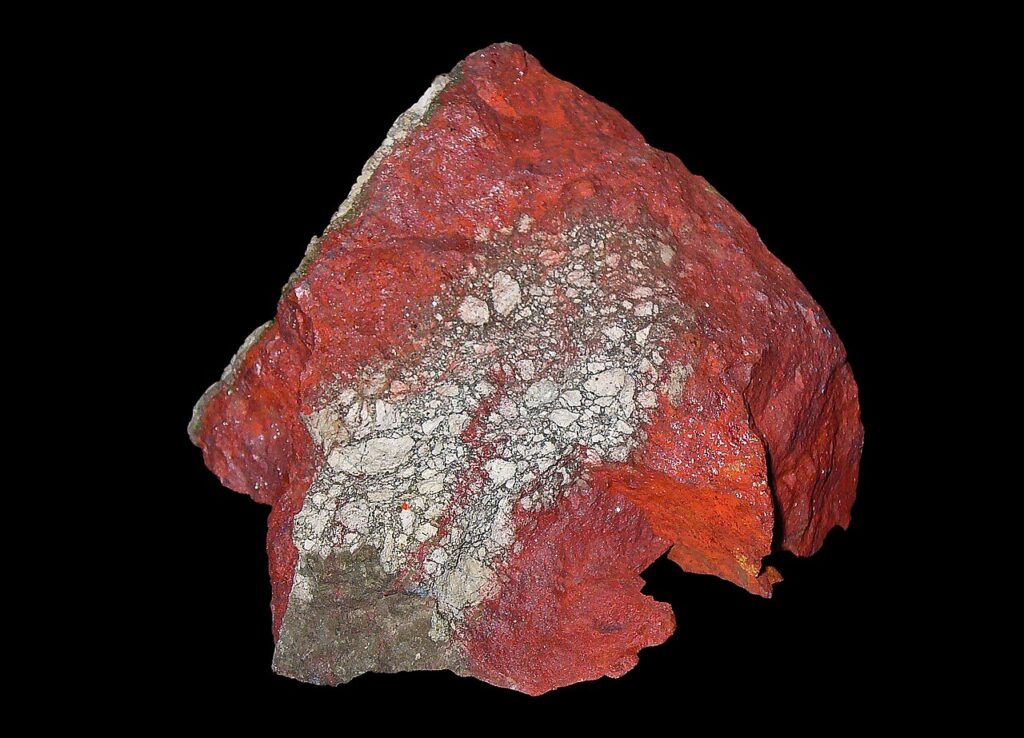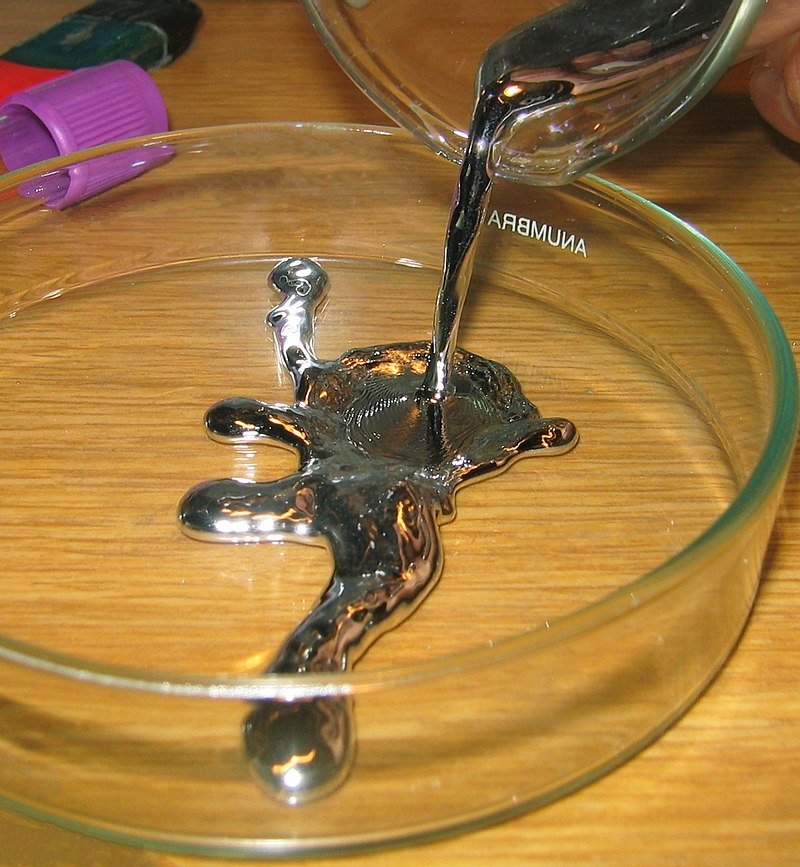Mercury is a naturally occurring element that is found in the Earth’s crust, and it is extracted from cinnabar ore. The process of obtaining mercury from cinnabar involves several steps:

Cinnabar. (2024, April 11). In Wikipedia. https://en.wikipedia.org/wiki/Cinnabar
- Mining: Mercury is primarily obtained from cinnabar ore, which contains mercury sulfide (HgS). The cinnabar ore is mined from deposits found in the Earth.
- Crushing and Grinding: The mined cinnabar ore is crushed and ground to liberate the mercury sulfide from the surrounding rock.
- Roasting: The crushed ore is then heated in a furnace to a temperature of about 500 to 600 degrees Celsius (932 to 1112 degrees Fahrenheit) in the presence of oxygen. This process, called roasting, causes the mercury sulfide to decompose into mercury vapor and sulfur dioxide gas: HgS+O2→Hg+SO2
- Condensation: The mercury vapor is then cooled and condensed into liquid mercury. This is typically done by passing the vapor through a series of condensers where it cools and changes back into a liquid state.
- Purification: The liquid mercury is collected and further purified to remove impurities. This can be done through distillation, where the mercury is heated to vaporize it again and then condensed to obtain pure mercury.
The resulting liquid mercury is then stored in flasks or containers and used for various industrial and scientific applications.

Mercury (element). (2024, May 16). In Wikipedia. https://en.wikipedia.org/wiki/Mercury_(element)
Cinnabar (mercury sulfide, HgS) is toxic. The primary concern with cinnabar is its mercury content. Here are some key points about its toxicity:
- Mercury Content: Cinnabar contains mercury, which is a highly toxic element. Mercury can exist in several forms, each with different levels of toxicity and ways of causing harm. The toxicity primarily depends on the form and the route of exposure.
- Inhalation Hazards: When cinnabar is heated or processed, it can release mercury vapor. Mercury vapor inhalation is particularly dangerous as it can cause severe neurological and systemic health problems.
- Skin Contact and Ingestion: While elemental mercury is less easily absorbed through the skin, compounds like mercury sulfide in cinnabar can be harmful if ingested or if particles are inhaled. Chronic exposure can lead to mercury poisoning, which can affect the kidneys, nervous system, and other organs.
- Chronic Exposure: Long-term exposure to mercury, even in small amounts, can lead to mercury poisoning, with symptoms including tremors, memory problems, mood swings, and cognitive impairment.
- Environmental Impact: Mercury from cinnabar mining and processing can also contaminate the environment, leading to bioaccumulation in the food chain and affecting wildlife and human health.
Due to these risks, handling cinnabar and processing mercury require strict safety protocols to protect workers and the environment. Proper ventilation, protective equipment, and environmental controls are essential to minimize exposure and prevent mercury poisoning.
Cinnabar
https://mojavedesert.net/desert-fever/waterman.html
https://mojavedesert.net/mining-history/chloride-cliff/page-07.html
https://mojavedesert.net/desert-fever/coso.html
Mercury
https://digital-desert.com/gold-mining/stamp-mill.html
https://mojavedesert.net/glossary/amalgam.html
https://mojavedesert.net/mining-history/chloride-cliff/page-07.html